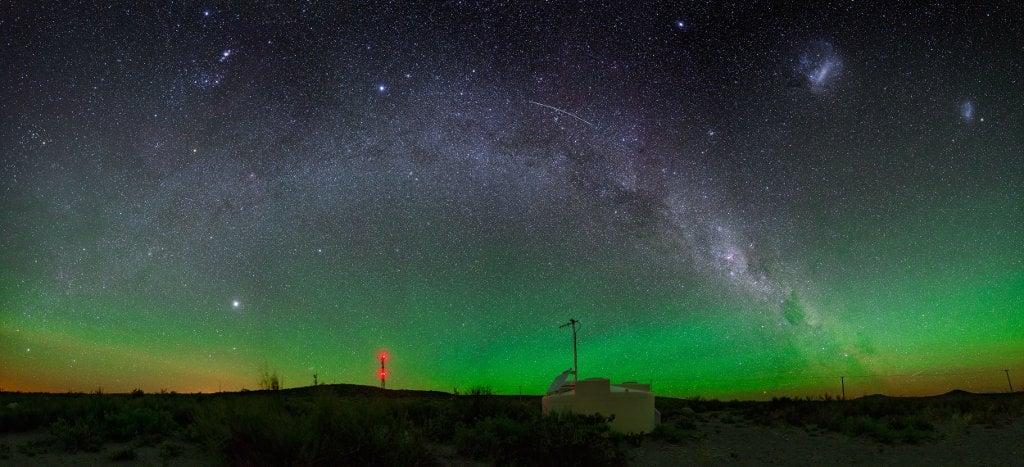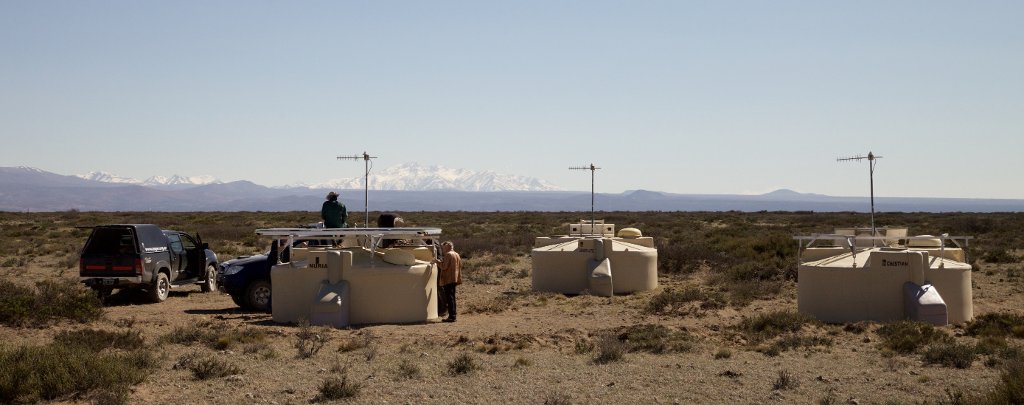Michigan Tech Helps Solve Mystery of Cosmic Rays
Using data-gathering equipment designed and tested at Michigan Technological University, scientists from 17 countries have identified Active Galactic Nuclei (AGNs)— containing massive black holes—as the most likely source of the highest-energy cosmic rays.
Three years of data collection and analysis is helping to bring the Pierre Auger Collaboration—an international team of scientists and engineers working from an observatory in Argentina—closer to understanding the mystery of the origin of the highest energy cosmic rays.
The findings of the Auger Collaboration are reported in the Nov. 9, 2007, issue of the journal Science.
“We’re looking at the most energetic particles in the universe,” said David Nitz, a professor of physics at Michigan Tech. “Nature has managed to accelerate these particles hundreds of millions times beyond what we can do in our most powerful particle accelerators.”
The logical next step, Nitz said, is to identify specific sources of the cosmic rays that bombard earth with these ultra-high energy particles. To do that, the scientists are planning to build an observatory in the United States that will be larger than the one in Argentina, to collect data from the northern hemisphere sky. Nitz, spokesperson of the future Northern Observatory, remarked, “A northern site would fulfill our original vision for the Observatory and enable us to to study more AGNs.
“This is the first time we’ve actually been able to say that the highest energy cosmic rays are protons and that they are most likely getting their enormous energy somehow from the massive black holes at the center of some galaxies,” said Brian Fick, an associate professor of physics at Michigan Tech who also worked on the Auger Observatory research. “And that’s remarkable.”
The Active Galactic Nuclei identified by the Auger Collaboration as the source of the highest-energy cosmic rays are thought to be powered by super-massive black holes that are devouring large amounts of gas, dust and other matter from their host galaxies and spew out particles and energy. Most galaxies have black holes at their center, but only a small fraction have an AGN. The black hole at the center of our galaxy, the Milky Way, is not an AGN.
Every event the Auger array records, including those leading to the current indings, depends at its core on concepts, code and technology developed and implemented by the Michigan Tech team.
The Michigan Tech physicists and students developed, in conjunction with their collaborators, electronics that record signals collected by the Pierre Auger Observatory in Argentina. “It’s extremely gratifying to see the ideas that we had over a decade ago withstand detailed scrutiny by our colleagues, grow into reality in the form of electronic hardware and become an essential part of the Observatory,” commented Nitz.
Michigan Tech scientists then tested over 1,200 electronics boards at extreme temperatures to ensure that they were fit for the rigors of Argentine site adjacent to the Andes Mountains.
“We are proud that our faculty and students could make such a key contribution to this important research,” said Glenn D. Mroz, president of Michigan Tech.
The Pierre Auger Observatory, named for the French physicist who first identified cosmic rays in 1938, has recorded almost a million cosmic-ray showers since its particle detectors and 24 specially designed telescopes started collecting data in 2004. It is, however, the 27 highest energy particles that are the most striking. Auger researchers found that most of those 27 came from the locations of the nearest AGNs, within a few hundred million light years of Earth.
One of the founders of the Auger Observatory project, Alan Watson of the University of Leeds in the United Kingdom, called the observatory’s results “a new window to the nearby universe and the beginning of cosmic-ray astronomy. “Our observatory,” he went on to say, “is producing a new image of the universe based on cosmic rays instead of light.”
Michigan Technological University is an R1 public research university founded in 1885 in Houghton, and is home to nearly 7,500 students from more than 60 countries around the world. Consistently ranked among the best universities in the country for return on investment, Michigan's flagship technological university offers more than 185 undergraduate and graduate degree programs in science and technology, engineering, computing, forestry, business, health professions, humanities, mathematics, social sciences, and the arts. The rural campus is situated just miles from Lake Superior in Michigan's Upper Peninsula, offering year-round opportunities for outdoor adventure.




Comments